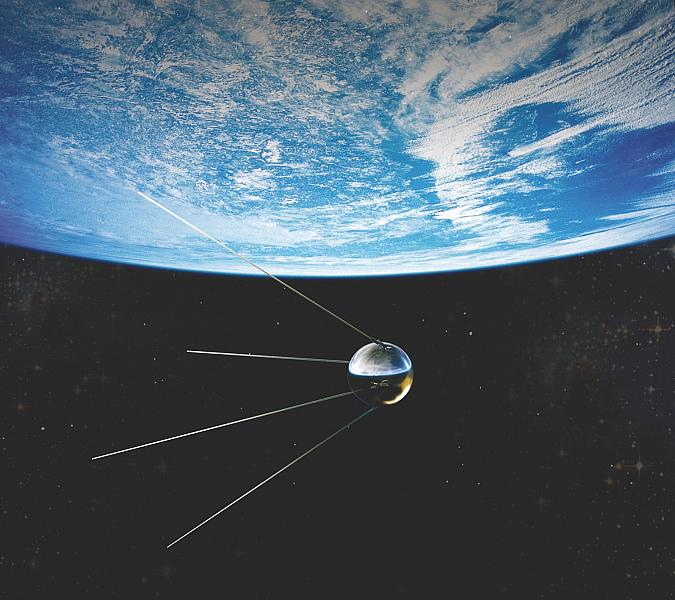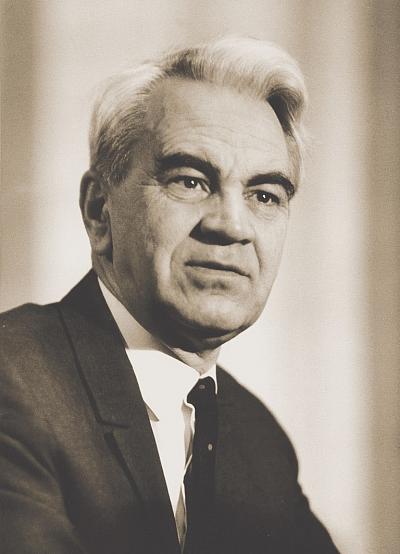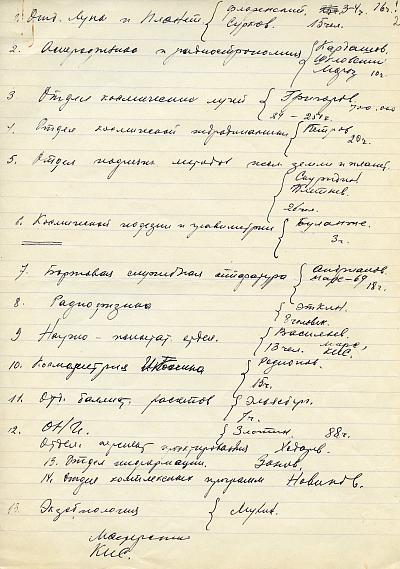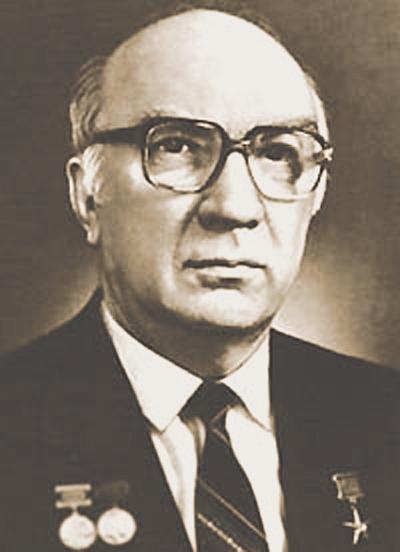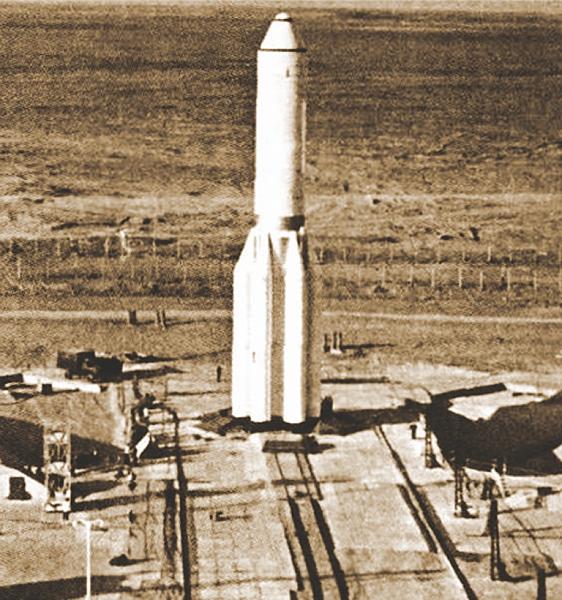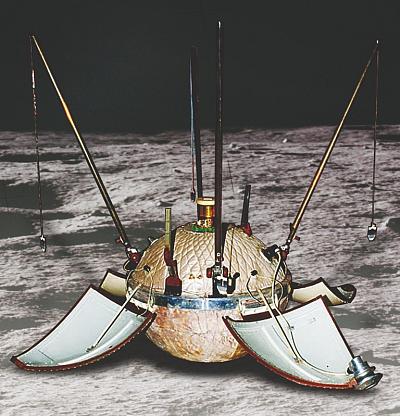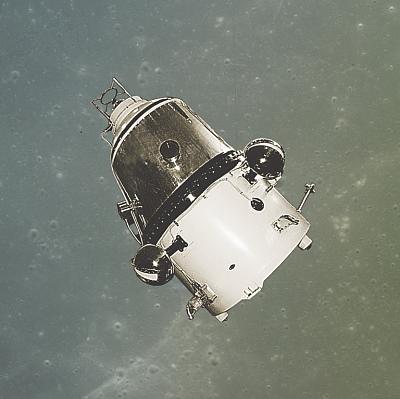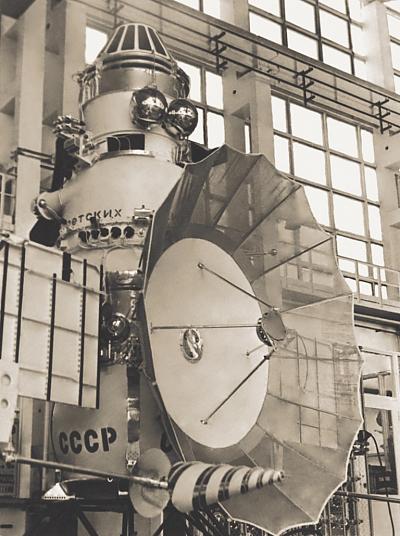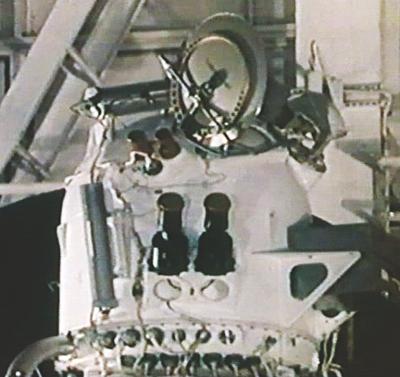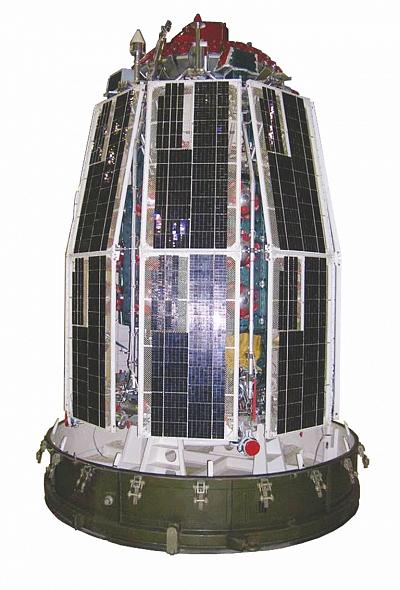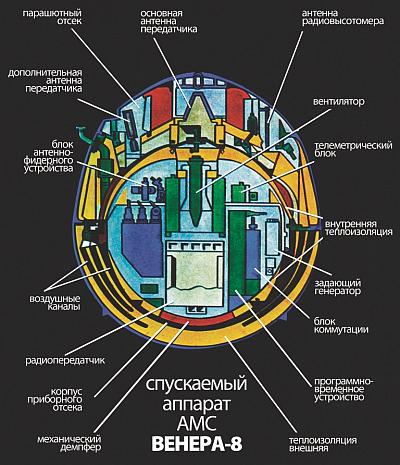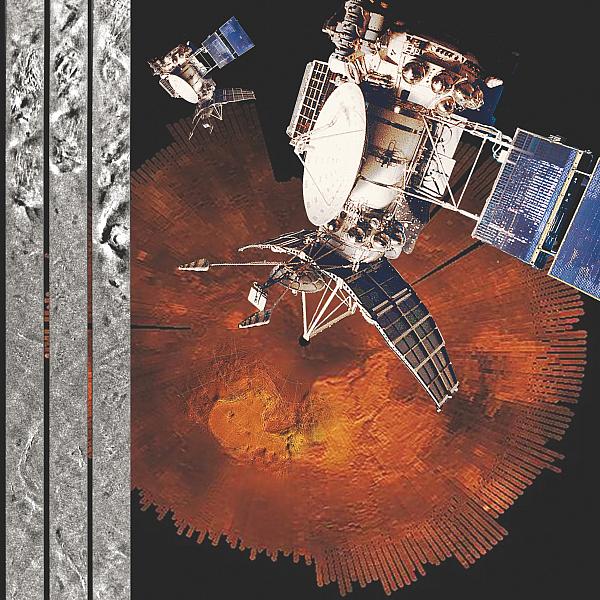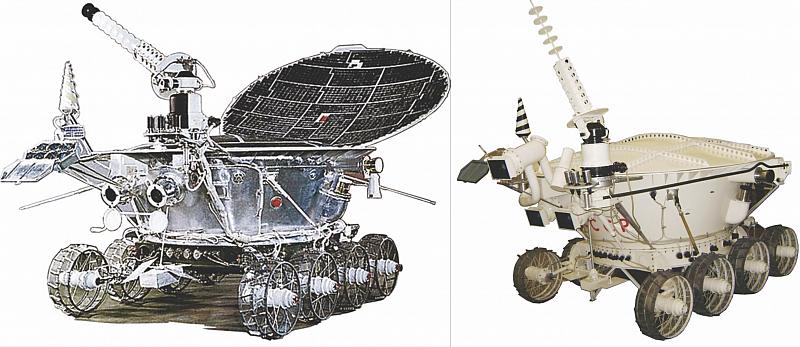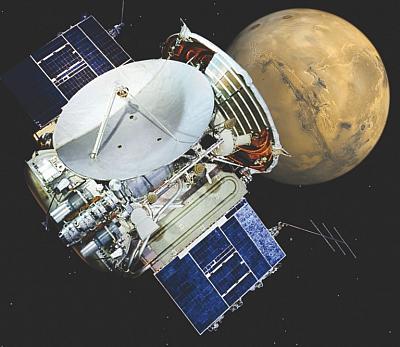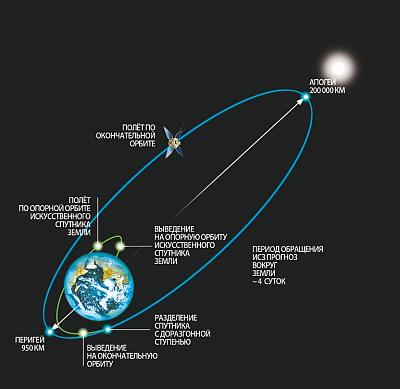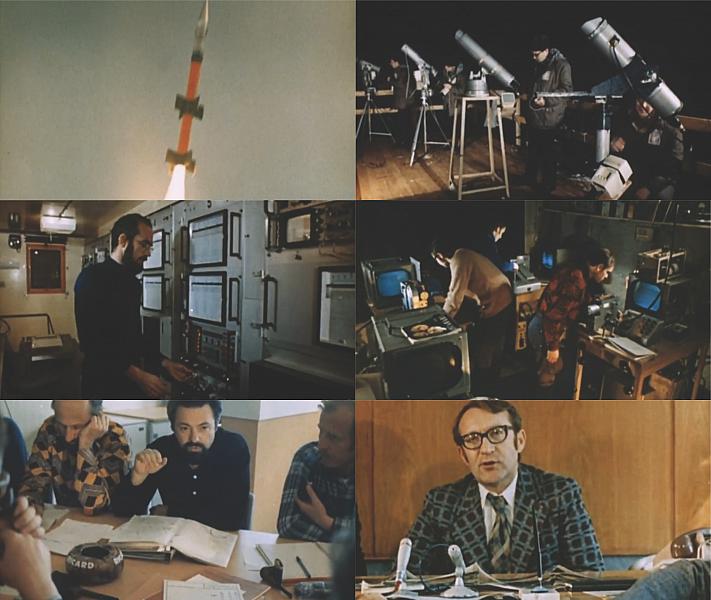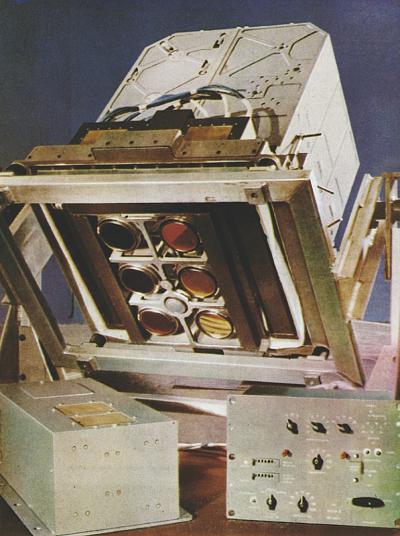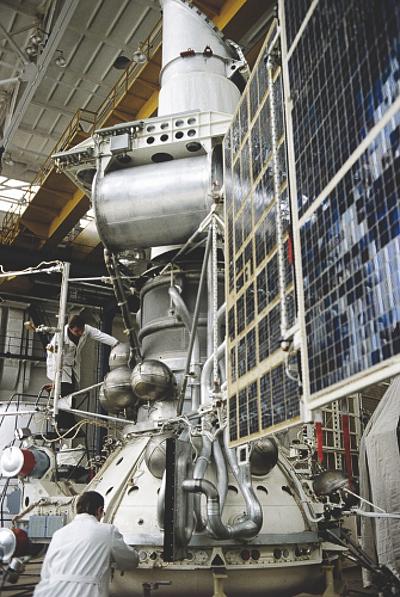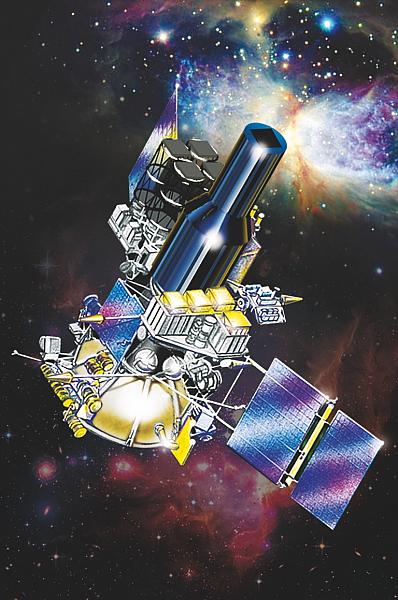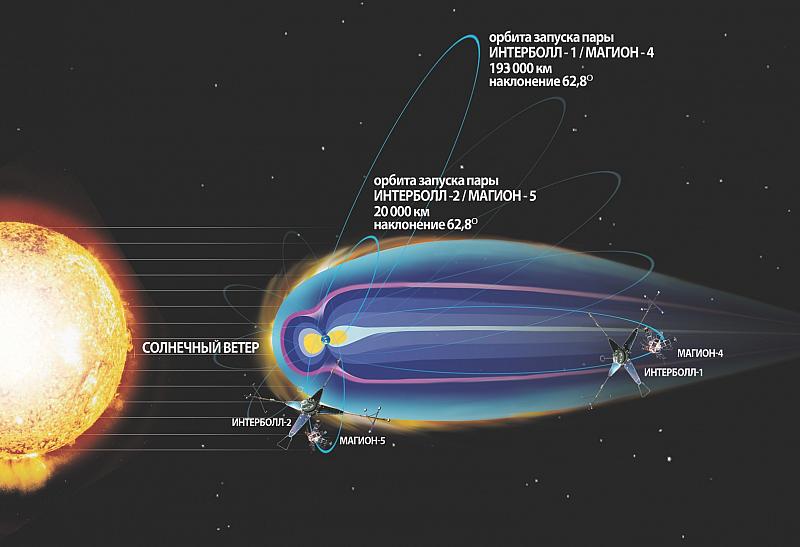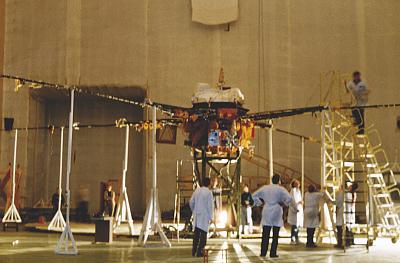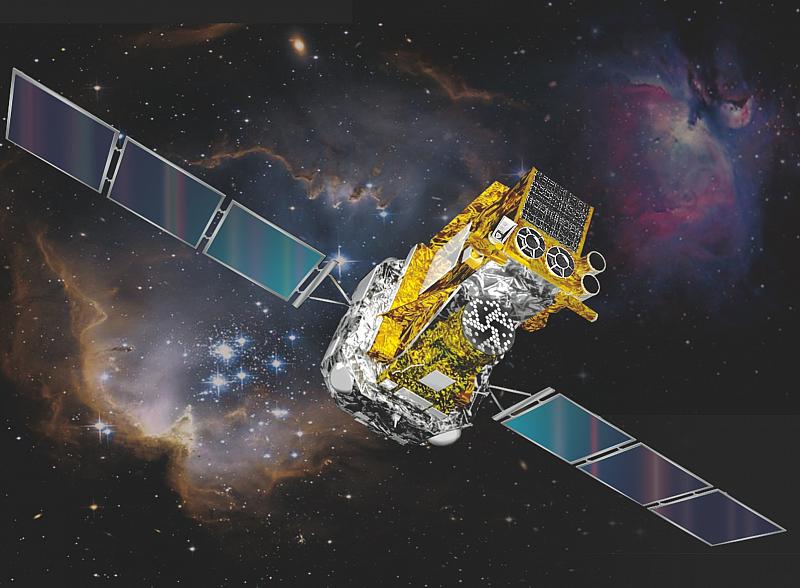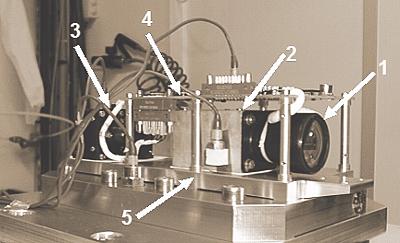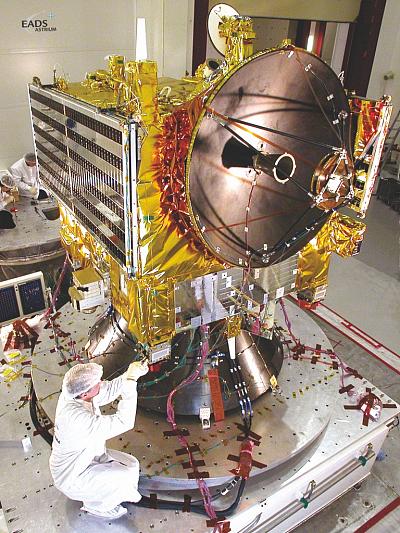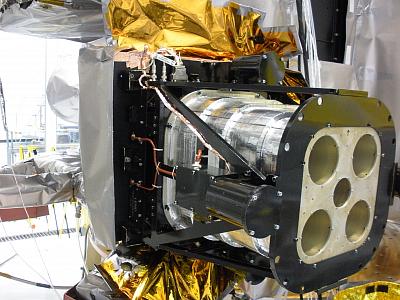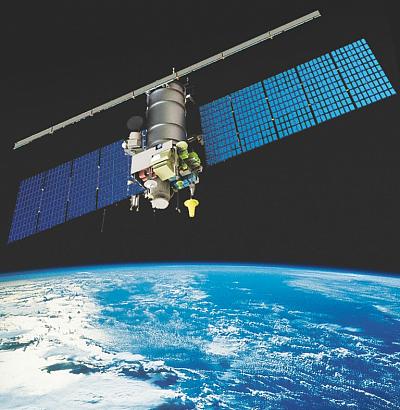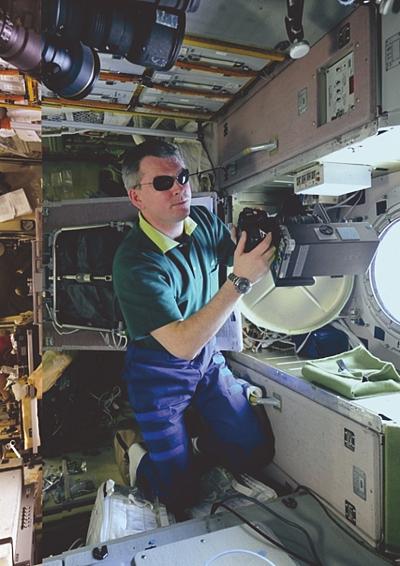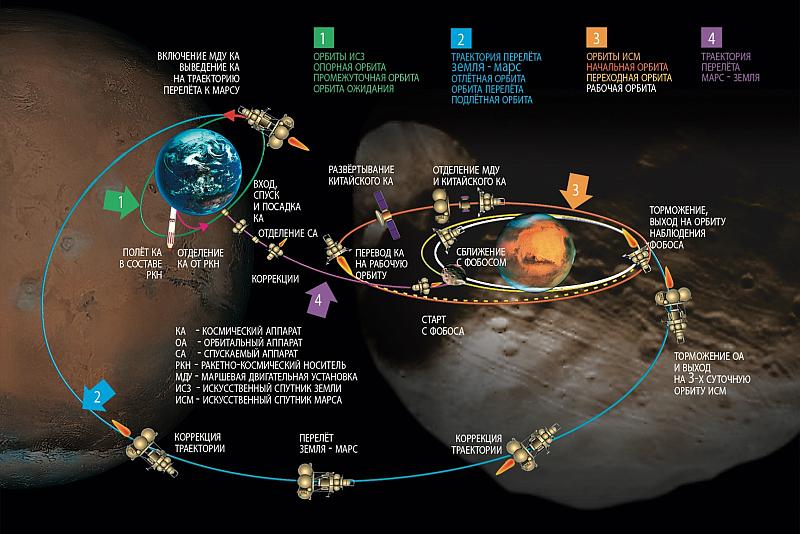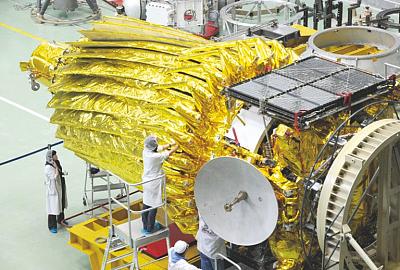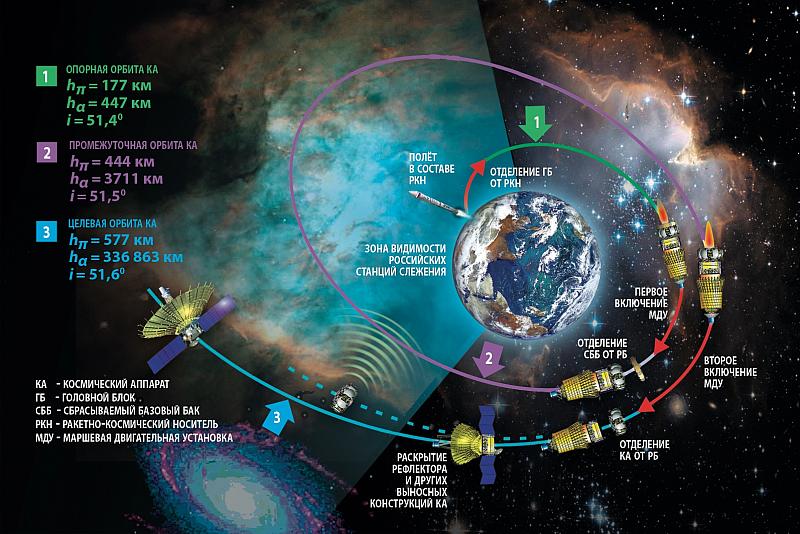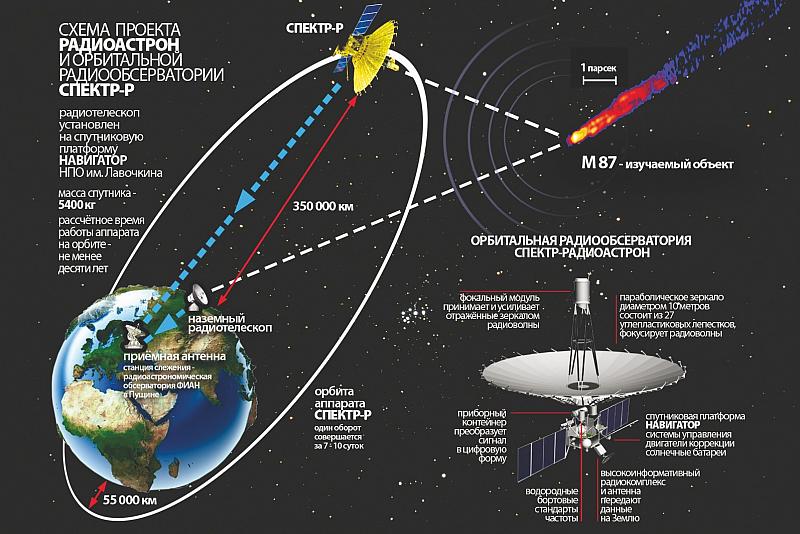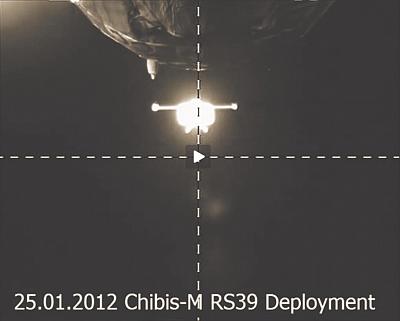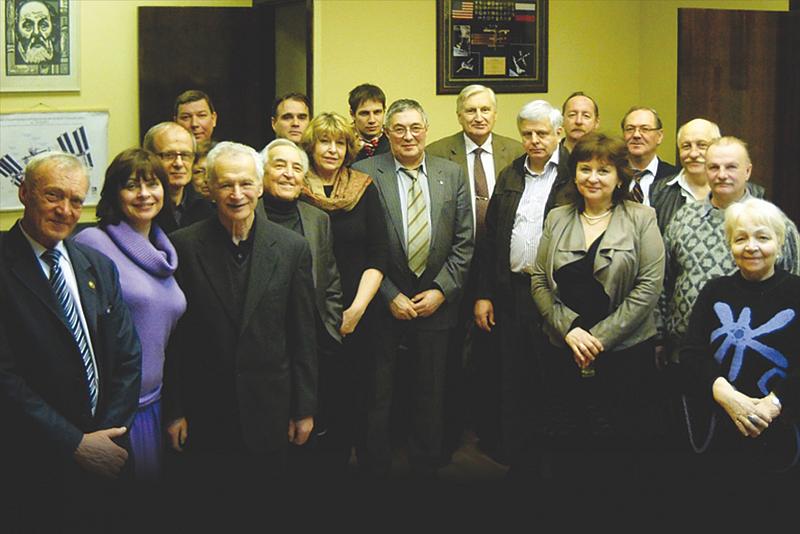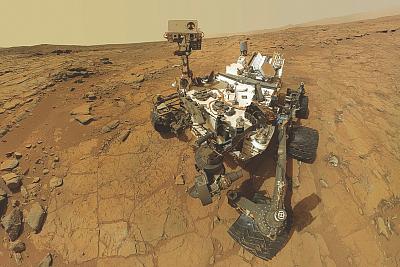IKI History. From the Project of the Joint Institute for Space Research to the 50th Anniversary
Prehistory. First satellites
The space age began on October 4, 1957 with the launch of the First Artificial Earth Satellite — PS-1 (“the simplest satellite“). It was followed by the Second (November 4, 1957) and the Third Satellites (May 15, 1958), and the latter was already equipped with a full-fledged set of scientific equipment for space exploration. These events marked the beginning of active space exploration. The first spacecraft were sent to the Moon, and on April 12, 1961, for the first time, a man flew into space — the first cosmonaut of the world, Yuri Gagarin.
First launches to Venus and Mars. The idea of a new Institute
Careful processing of experimental data of the first explorations of the outer space significantly expanded, and sometimes even changed our understanding of the physical and chemical characteristics of the upper atmosphere and near-Earth space.
Soviet scientists and rocket engineers obtained many outstanding results, which determined the leading position of the Soviet Union in this field of science and technology. But those were only the first steps on the path of exploration of the Universe.
At that time space research was made by separate institutes of the Academy of Sciences, as well as by engineering and industrial facilities of various ministries and departments. At the dawn of the space era this form of space experiments fully justified itself, because launches were singular and every space experiment was installed aboard, in fact, unique spacecraft. Further research aimed at a more detailed, in-depth study of outer space, systematic accumulation and compilation of data, specialized experiments demanded not just a broader field of research and new scientific and engineering organizations, but their effective cooperation as well.
This problem could be solved by the establishment of a scientific and methodological space center, which would significantly streamline the work underway, eliminate overlaps, and make the activities more structured, so that all areas of scientific space knowledge would develop. Finally, such a center would make it possible to get as much new data as possible at the lowest cost.
In July 1963 the President of the Academy of Sciences of the USSR Academician Mstislav Keldysh proposed to organize a Joint Institute for Space Research within the Academy of Sciences. Its main goal was to start systematic exploration of outer space with standardized small and then heavy artificial satellites, made in the country. The Institute should develop and build scientific equipment, mount it on serially produced spacecraft, prepare them to launch, and participate in launch.
Most importantly, the Institute would be the customer for all research satellites, thus avoiding their specifications to be imposed by manufacturer rather than scientists.
According to Keldysh, such Institute should have a regular staff of highly experienced scientists with background in space research; and a batch of well-equipped laboratories and production facilities, a data processing center for quick access to information, test facilities for pre-launch tests. The Institute was envisioned as the leading organization for basic science space research.
Keldysh's proposal was approved and the Institute was established, albeit with far less authority than had been planned initially.
№ 392-147 15 мая 1965 г.
COB. СЕКРЕТНО
В целях обеспечения дальнейшего развития в Советском Союзе исследований космического пространства, накопления и обобщения научных знаний о космосе Совет Министров Союза ССР ПОСТАНОВЛЯЕТ:
- Принять предложение Академии наук СССР о создании в 1965 году в г. Москве Института космических исследований Академии наук СССР.
- Установить, что Институт космических исследований Академии наук СССР является головной организацией по научным исследованиям в области изучения космоса, разработке и изучению научных проблем по исследованию Луны и планет солнечной системы, связанных с космическими полётами, и является научно-методической базой Междуведомственного научно-технического совета по космическим исследованиям при Академии наук СССР.
- Возложить на Институт космических исследований Академии наук СССР:
- научно-методическое руководство и обобщение результатов работ, проводимых организациями Академии наук СССР, государственных комитетов, министерств и ведомств СССР по исследованию верхних слоёв атмосферы, космического пространства, Луны и планет солнечной системы;
- разработку перспективных комплексных планов исследований космического пространства, Луны и планет солнечной системы, изыскание путей и методов их выполнения в короткие сроки и с наименьшими затратами средств.
- Академии наук СССР в двухмесячный срок разработать и представить согласованное с Министерством общего машиностроения и Министерством обороны СССР Положение об Институте космических исследований Академии наук СССР, а Комиссии Высшего совета народного хозяйства СССР по военно-промышленным вопросам рассмотреть и утвердить это Положение.
- Разрешить Академии наук СССР построить в 1965-1967 годах, в виде исключения, в г. Москве для размещения Института космических исследований лабораторные корпуса общей рабочей площадью основного назначения до 30 тыс. кв. метров.
Мосгорисполкому отвести Академии наук СССР для строительства указанных корпусов земельный участок. Строительство корпусов Института космических исследований возложить на Главспецстрой при Государственном производственном комитете по монтажным и специальным строительным работам СССР.
- Разрешить Академии наук СССР и Госплану СССР, в виде исключения, включить в план капитальных работ на 1965-1966 годы строительство лабораторно-производственных корпусов Института космических исследований без наличия утверждённой в установленном порядке проектно-сметной документации.
Госбанку СССР впредь до утверждения проектно-сметной документации финансировать строительство указанных объектов по проектам и сметно-финансовым расчётам, составленным по рабочим чертежам.
Председатель Совета Министров Союза ССР А. Косыгин
Управляющий Делами Совета Министров СССР М. Смиртюков
АП РФ. Ф.93. Коллекция постановлений и распоряжений СМ СССР за 1965 г.
Заверенная копия на бланке.
Советская космическая инициатива в государственных документах. 1946-1964 гг. /
Под ред. Ю. М. Батурина. М.: Изд-во «РТСофт», 2008.
At the same time, the Space Research Institute (or IKI, short for Institut Kosmicheskih Issledovany in Russian) was not granted the customer's rights for scientific spacecraft. Ministry of General Machine Building Industry, then the producer and the customer of space technology at the same time, was uncompromising in this question. Perhaps, this was one of the reasons for today's weakening of Russia's positions in space research.
Neither was the Institute named “Joint” as had been initially proposed by M. Keldysh's, although it was formed from many divisions and departments of the institutes of Academy of Science and other bodies (including S. Korolev's OKB-1), that had dealt with space research.
The Institute was in charge for experimental activities in the following fields of space physics: astrophysics; physics of planets and small bodies of the solar system, solar physics and solar-terrestrial interactions, space plasma research and nonlinear geophysics. It also was commissioned with development of space research programs; development and testing of technologies for the projects included in the national space program.
M. V. Keldysh did not only establish IKI, but was, in fact, the driving force of its forming, especially in the first and most difficult years.
Symbolically, the Institute's building is located on the square bearing Keldysh's name. There was a project of a monument of this famous academic, however it has not yet been built.
Directors of Space Research Institute
Over the years IKI was headed by Academician G. I. Petrov (1965–1973), Academician R. Z. Sagdeev (1973–1988), Academician A. A. Galeev (1988–2002), academician L. M. Zelenyi (2002–2018), corresponding member of the Russian Academy of Sciences A. A. Petrukovich (2018—present).
IKIpeople
One of the first scientific departments in the Institute was the Department of Geophysics and Space Plasma Physics. It was formed from a group of theoreticians headed by G. A. Skuridin (previously at the Department of Applied Mathematics of the Steklov Mathematical Institute of the Academy of Sciences) and Laboratory of Auroras (Institute of Atmospheric Physics) headed by Yu. I. Galperin. Within the Department there was space plasma working group headed by O. L. Vaisberg.
Cosmic Rays department was established in 1967, and its field of interest was quite close to that of the Department of Geophysics. Another department, which studied space plasma and space gas dynamics was headed by Academician G. I. Petrov.
It included theoretical (V. B. Leonas) and experimental (V. B. Baranov) laboratories. Later they were joined by a group headed by I. M. Podgorny (from the Kurchatov Institute), who formed a separate laboratory. They modeled in a lab interaction of solar wind with the Earth's magnetic field and atmosphere of planets.
In 1971 a large group of scientists, led by K.I. Gringauz (from the Radio-Technical Institute of the Academy of Sciences), formed an independent department for experimental studies of solar plasma.
Shortly afterwards the Department of Geophysics was transformed into Space Plasma Physics Department headed by L. L. Vanyan (previously at the Institute of Physics of the Earth of the Academy of Sciences).
As a result of yet another reorganization a new Plasma Department was organized. A newcomer to the Institute R. Z. Sagdeev volunteered to head it. After he had been appointed the Director of the Space Research Institute, he invited one of his students A. A. Galeev to head the plasma department, transformed into Plasma Physics Department in 1973. Besides A. A. Galeev's theoretical laboratory, this new department consisted of Yu. I. Galperin's Laboratory of Auroral Studies (later renamed to Laboratory for Magnetosphere Physics), Laboratory for Circumplanetary Plasma based on K. I. Gringauz's Department for experimental solar plasma studies, I. M. Podgorny's Modeling Laboratory and O. L. Vaisberg's Space Plasma Group and N. F. Pisarenko's Solar Cosmic Rays Group, which later were transformed into labs.
Later plasma studies in the institute continued to “improve”, according to the new Institute director R. Z. Sagdeev. A. A. Galeev headed a new Theoretical Department and G. A. Skurtdin — the Department of Solar-Terrestrial Relations. After A. A. Galeev was elected the director of IKI, L. M. Zeleny became head of the Space Plasma Physics Department, and after him — A. A. Petrukovich.
Study of planets and small bodies of the Solar system has always been one of the main areas of Institute's research. However, initially these activities were distributed among multiple departments. Not long before his retirement from the office of director G. I. Petrov decided to reorganize the planetary realm, combining several research laboratories into a single Department of Moon and Planets, under his personal leadership. However, it did not find understanding of the new director R. Z. Sagdeev. A number of laboratories engaged in lunar and planetary studies was soon closed, and the Department of Moon and Planets (after being renamed to Comparative Planetology Laboratory) was transferred to Institute of Geochemistry and Analytical Chemistry of the Academy of Sciences.
Soon both manned and unmanned moon programs start being scrapped across the USSR. By the early eighties this subject was virtually eliminated in IKI and was revived only recently.
The integrated Planetary Research Department was formed in IKI in 1974. It was headed by V. I. Moroz and included four laboratories: Spectroscopy (V. I. Moroz), Infrared Photometry and Radiometry (L. V. Ksanfomaliti), Mass Spectrometry (V.G. Istomin), Physical and Chemical Planetary Exploration (L. M. Muhin).
Its first results the department obtained from Mars-3 and Mars-5 stations (they concerned IR radiometry). There were also experiments on remote measurement of water vapour in the Martian atmosphere. The results of experiments in Venus atmosphere were the first of the kind. A set of planetary atmospheres engineering models was developed. In the beginning it was a small reference library, but gradually more and more specialists of the department began to work on it, as spacecraft designers demanded for data of higher and higher precision.
However, the department was initially limited in its subject by physical studies of atmospheres and surfaces of planetary bodies. It was assumed that geologists and television survey experts would be gathered in separate divisions. One of them was, in particular, the Department of Optical and Physical Measurements.
The team of scientists and engineers from the Moscow Institute of Geophysics, Aerial Photography and Mapping led by B. N. Rodionov, joined IKI in 1967 and made the backbone of this department. By the time of their transition the team have been researching satellite imagery and video processing for already 10 years. One of the department's first results in IKI was topographical analysis of the lunar surface by the images transmitted by Lunokhod 1 and 2.
For the most part the department was focused on orbital observations of the Earth, on one hand refining photographic techniques and remote sensing methods, on the other — selecting tasks that could be solved by satellite imagery.
After a series of administrative reforms and other changes, including changes of the name, the department has retained its optical and physical specialization.
In 1967 a scientific division for radio instruments was established in IKI from the Radio Laboratory of the Lenin Moscow State Pedagogical Institute. As the microwave receivers developed by the group were getting more sophisticated, they started to be used to study the land and the ocean from space. In 1974 the group was reorganized in a separate Department for Applied Space Physics led by V. S. Etkin.
The first task of the department was to study processes in a deep ocean by their visible effects on its surface. But by the early 1990s due to cut in funding of the ocean research, the department's activities drifted towards environmental studies. Therefore V. S. Etkin suggested another name for his department, which sounded “Space Research of the Earth as an Ecological System”.
The department struggled to apply its potential in the given circumstances. Among the new objectives were large projects in Earth remote sensing. Another idea was to move from ocean to land, in particular to remote analysis of soils and snow cover.
The Laboratory of Space Physics that once had been the part of the department (headed by V. S. Etkin), became a department of its own. The newly established entity named Applied Space Research Department (later Space Physics) was initially headed by S. S. Moiseev, and after his death by N. S. Erokhin.
The Department of Astrophysics (head I. S. Shklovsky) based at the Department of Radio Astronomy of the MSU Shternberg State Astronomical Institute has undergone a major reformation on par with the Moon and Planetary Department. Its scientists, before they joined IKI, had already had sufficient experience in space astronomy. Each year the department's scope of work was widening. Shklovsky sought to focus on the “big” astronomy, i.e. studies of the Galaxy, its star population, and extragalactic objects and cosmology. However, in 1985 he passed.
By that time the Institute had already for more than 10 years had the Department of Theoretical Astrophysics led by Academician Ya. B. Zeldovich. It focused at theoretical research in cosmology, study of hot gas in galactic clusters and spectrums of accreting disks around black holes and neutron stars.
After the objectives of these two departments were separated and Zeldovich's department was reinforced with an X-ray lab and several specialists from Shklovsky's former department, the Department of Theoretical Astrophysics was transformed into the Department of High Energy Astrophysics headed by R. A. Sunyaev. The Department of Astrophysics headed by its new Director N. S. Kardashev joined the Physics Institute of the Academy of Sciences in 1990—1991.
Several separate laboratories were established during the early years of IKI. Among them are the laboratory (later department) of astrophysics and applied millimeter, submillimeter and infrared technologies; special laboratories for the Earth remote sensing; laboratory for spectrometry of cosmic gamma radiation; laboratory for active diagnostics; laboratory for very long baseline radio interferometry.
Data from the first high-altitude rockets, artificial Earth satellites, lunar and interplanetary probes were processed at the Department of Applied Mathematics (namely in the Information and Calculation Bureau within Mathematical Institute of the Academy of Sciences. In 1966 almost all Bureau staff joined IKI and formed the Department of the Automated Telemetry Processing. In 1988 it was merged with the Department of Ballistics. From that point on IKI had a full-fledged department for telemetry processing, whose main task was full information support of space experiments. The software developed by the Department was improving continuously, thanks to extensive use of computers and their constant upgrade.
Technical support of research aboard the spacecraft, including supply of full documentation for the instruments and their comprehensive testing, as well as participation in operation and control during the flight were given to another newly created lab that later evolved in a department.
E. M. Vasilev was the head of the both since its inception.
Design and construction of scientific complexes onboard interplanetary spacecraft, track. g platforms, onboard systems, control logic, data acquisition and transmission, etc. was assigned to the Department of Software-Controlled Systems (head B. N. Novikov).
Testing and Control Station and Laboratory Testing Station (KIS and LIS respectively, according to Russian abbreviation) were created to test the instruments before they were mounted on spacecraft, and to study their performance within onboard systems and under the space conditions. They have become the main testing facilities for space instrumentations at the Academy of Sciences. They are equipped for mechanical (vibration, shock, linear overload), thermal vacuum, and climatic tests as well as tests for electrical compatibility and insulation. During fine-tuning at these facilities the instruments are gradually adjusted according to their specs.
V. M. Ratner, former IKI deputy director, supervised these two testing facilities as they were being built.
IKI test facilities are certified as the test center for the Academy of Sciences and are part of a Federal System of Certification of Space Equipment, which is entitled to test scientific space instruments according to certificate testing.
In 1967 IKI was reinforced with the Design Bureau (OKB IKI), an engineering organization with a pilot production facility, in Frunze (now Bishkek, the capital of Kyrgyzstan). After the collapse of the Soviet Union this OKB became a foreign organization and now is a contractor of IKI.
A terminal station with automated scientific data processing and transmission system was built at Deep Space Communication Center in Eupatoria (Crimea).
A pilot production facility for scientific instruments was established in Tarusa (Kaluga region) — Special Design Bureau for Space Instruments Engineering (SKB KP IKI). In recent years it works on as the instrument-making department of IKI.
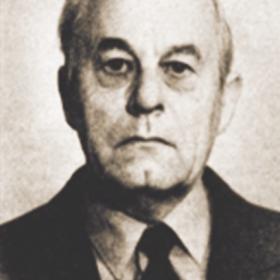
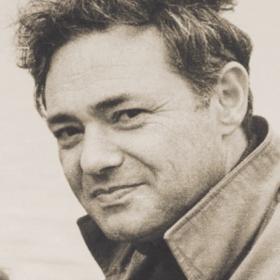
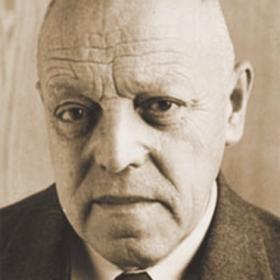


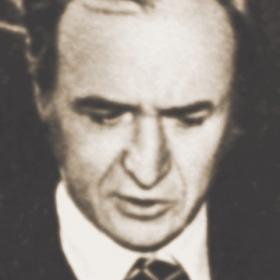
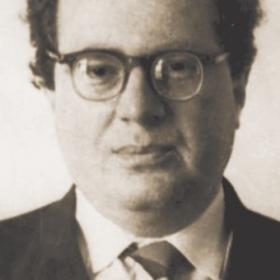

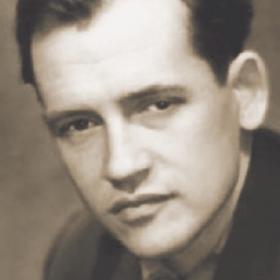

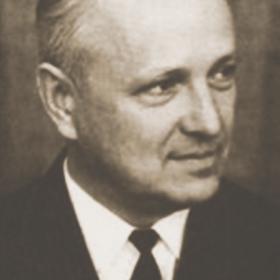
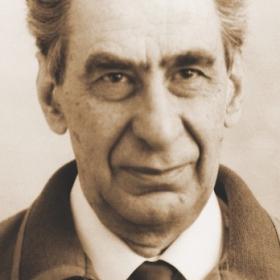

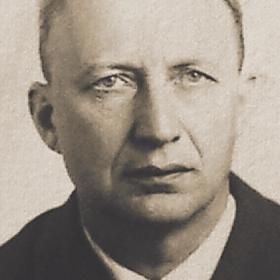
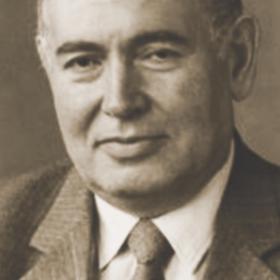
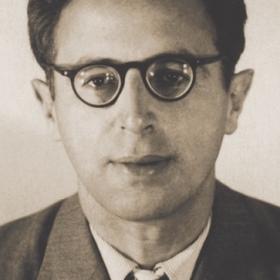
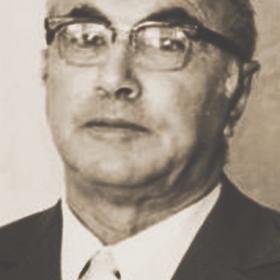
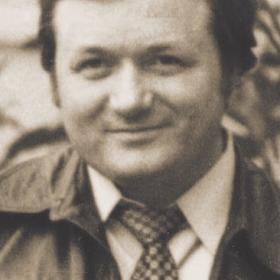
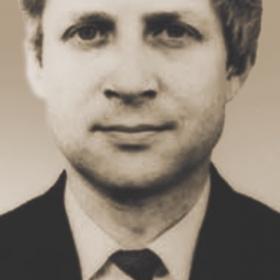


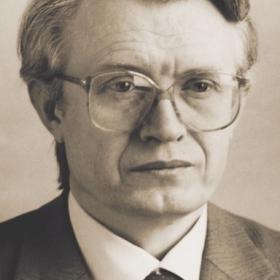
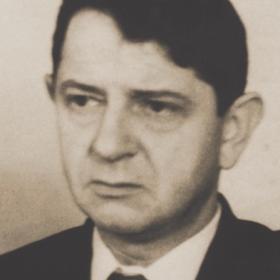
IKIsatellites. 1964–2012
The Institute specialists were involved in both national and international projects, preparing and performing space experiments, collecting and processing data from spacecraft, starting from the first Proton heavy satellite (1965). In recent years they were also very active in international projects as cooperators and co-investigators.
In some projects scientists and specialists of the Institute developed and tested onboard scientific equipment, and then did research with their help, in others they received and processed data from spacecraft, analyzed and interpreted it.
Even before the creation of IKI, a group under the leadership of Prof V. M. Kovtunenko (Design Bureau OKB-586, Dnepropetrovsk) developed a standardized series of DS-U small satellite, with three main versions: a) chemically powered DS-U1, b) with solar panels DS-U2, and c) DS-U3 with solar orientation system.
In summer of 1964 V. M. Kovtunenko presented the satellite study design to the OKB-586 chief designer M. K. Yangel, representatives of industry, Academy of Science, and its President M. V. Keldysh. K. I. Gringauz of Radio-Technical Institute of the USSR who had been already experienced in space experiments, remarked that the project was already out of date, since it had a heavy pressurized body, which would leave to scientific payload one third of overall spacecraft mass at best. Even though everybody on the meeting understood that the nation at that time didn't have electronic components capable of working in the open space, this remark left an uneasy feeling. Still, the project was adopted.
S. A. Korolev's Design Bureau OKB-1 had earlier built small satellites (MS, ‘Maly Sputnik’ in Russian), launched under names Cosmos 2, 3, 5. OKB-586 experts assumed that MS stood for 'Moscow Sputnik' and called their orbiters DS, which meant ‘Dnepropetrovsk Sputnik’.
18 small DS-U satellites were planned for the Academy of Science. They should have continued the Cosmos program, which began in 1962, as well as performed some new tasks, for example, study of upper atmosphere, cosmic radiation variation, solar bursts in UV and X-ray bands, propagation of very low-frequency waves in the ionosphere, meteorites in near-Earth space, global magnetic survey, etc.
Later OKB-586 developed and built a series of standardized heavy automatic orbital stations (AUOS in Russian) in two versions. They were used for the national space program starting from the Cosmos 261 satellite, but especially for the international program Intercosmos.
Prof. Keldysh's idea to install scientific instruments on serially built spacecraft has worked. As space research program evolved the concept of standardized satellites transformed into the concept of unified platforms, where scientific instruments could be mounted according to the needs of specific space mission (for example, 12 Prognoz satellites, current Karat and Navigator platforms).
On July 16, 1965 the heaviest at that time scientific space station Proton was launched. Having mass of 12.2 tonnes (with 3.5 tonnes of scientific payload), it was aimed at in-depth study of cosmic rays and effects of ultrahigh-energy particles on matter. This research continued on Proton 2, 3, 4. Proton 4 had a mass of 17 tonnes with scientific payload of 12.5 tonnes.
Flights of Proton spacecraft family marked a new trend in experimental and theoretical astrophysics as well as particle physics. For the first time space-born instruments examined solar radiation and its hazards, energy spectrum and chemical composition of cosmic rays, interactions of ultrahigh energy particles, absolute intensity and energy spectrum of galactic gamma rays.
The ideologist of the Proton project was the prominent Soviet physicist N. L. Grigorov. He developed a genuine method to determine the range of interaction inelasticity between cosmic ray protons and atmospheric atom nuclei. He invented a new method to measure the energy of high energy hadrons, named ionization calorimeter. He proposed a method to determine the lower boundary of effective cross-selection of inelastic interaction between cosmic rays protons and atmospheric nuclei by measuring hadron flux with no accompanying particles in the lower atmosphere.
On January 31, 1966 Luna-9 unmanned station was launched. On February 3, 1966 for the first time ever its lander descended to the Moon and sent back panorama near Oceanus Procellarum. The lander's active lifetime on Moon surface totaled 46 hours, 30 minutes and 30 seconds. (It is worth to note that none of the previous USSR’s or United States’ endeavours to deliver operational scientific equipment to the surface of the Moon had been successful, with five US Ranger-family and four USSR’s Luna-family landers crashing from 1959 to 1965).
Luna-9 sent back images of lunar surface at different sun’s position above the horizon, which made it possible to study small features of the relief, sizes of rocks, and depressions. Successful Luna-9 landing and the images it retrieved were of high importance for further lunar flights including manned Moon exploration, which was then underway.
On March 3, 1966 Luna-10 unmanned spacecraft was launched. On April 3, it became the first artificial satellite of the Moon. Surface gamma emissions, magnetic and gravitation fields were being studied for 56 days. Chemical composition and radioactivity of rock were measured, albeit indirectly. 3 more orbiters followed the spacecraft: Luna-11, -12 and -14 (1966–1968). Each was unique, bearing its own features, sporting new designs and new instruments.
Phototelevision system onboard Luna-12 orbiter sent large-scale images of lunar surface. Regular and long observations of spacecraft orbital parameters resulted in more precise calculations of Earth-to-Moon mass ratio as well as Moon’s shape and gravitational field. Cosmic rays and charged particles from the Sun were also being studied.
On June 12, 1967 Venera 4 was launched — the first spacecraft to take measurements in the atmosphere of another planet. The project’s difficulty was that by that time no reliable information about the atmosphere and the surface of the planet (mainly, their temperature and pressure) was available. The lander was made with assumption of 10 bar pressure. Hence the station stopped working at a height of 25 km above the surface, unable to bear the real pressure of 18 bar. However, the first hour and a half of descent brought back some results on temperature, pressure, wind speed, CO2, N2, and H2O concentrations on the heights of 25...55 km from the surface. Research yielded that the atmosphere consisted by 90...95% of CO2, no nitrogen was found. Temperature recorded at the time of the lander’s destruction was 535 K.
The flyby spacecraft measured space plasma properties and ultraviolet radiation. Venus’s vast hydrogen corona was discovered. During subsequent missions of Venera-5 and 6 (1969) similar measurements were carried out with instruments located on flyby modules and landers designed for pressures of 25 bars. As the pressure reached 27 bar and temperature grew to 320 degrees Celsius, stations stopped sending data.
In 1969, two launches of automatic planetary stations took place under the Mars 69 program. Both were unsuccessful due to launch vehicle accidents.
Mars 69 main scientific goal was to make images of the Martian surface with three photo and TV cameras with maximal resolution of 200...500 m on the surface. Three light filters were used to obtain images in different spectral bands. Lenses with focal lengths of 50 and 350 mm made images of 1500×1500 and 100x100 km area respectively.
Besides, Mars 69 scientific instruments studied Mars and near-Mars space. RA68 radiofrequency radiometer was used to determine the temperature of Martian surface. IV1 moisture meter determined the content of water vapour in the atmosphere of the planet. USZ ultraviolet spectrometer registered the spectra of radiation reflected from the planetary surface. UTV1 infrared Fourier spectrometer studied the radiation of the atmosphere and planetary bedrock. KM69 was an instrument to register cosmic radiation and to study the composition and spectra of solar cosmic rays, electrons, and protons. GSZ gamma spectrometer measured amplitude gamma spectra. UMR2M hydrogen and helium mass spectrometer analysed ion neutral composition of the atmosphere. PL19M Energy and mass spectrometer measured the fluxes of solar plasma, RIP-803 spectrometer for low-energy ions was used to measure separately flux density of protons and alpha particles.
On December 19, 1968 Cosmos 261 spaceraft was launched for comprehensive study of the upper Earth atmosphere and the nature of auroras. It ushered in the program of cooperation between socialist countries, which later was named Intercosmos.
On October 14, 1969 Intercosmos-1 satellite was launched following intergovernmental and interdepartmental agreements on cooperation in the exploration of outer space for civil purposes. A total of 23 spacecraft, along with 11 high-altitude Vertikal rockets were launched within the program.
Intercosmos satellites may be divided into the following types by their scientific purposes:
- solar: Intercosmos-1, 4, 7, 11, 16, Copernicus 500 to monitor ultraviolet and X-ray radiation from the Sun as well as sporadic solar radio emission;
- ionospheric: Intercosmos-2, 8, 12, 19, Bulgaria 1300;
- magnetospheric: Intercosmos-3, 5, 6, 10, 13, 14, 17, 18 to study the Earth’s upper atmosphere, low-frequency electromagnetic radiation, dynamics of the Earth’s radiation belts, cosmic rays of ultrahigh energies, as well as the magnetosphere-ionosphere electromagnetic interaction (Intercosmos-6 had a reentry module with scientific instruments);
- Intercosmos-20, -21 for Earth’s studies (land, oceans, and atmosphere).
Intercosmos family spacecraft were based on Cosmos standard spacecraft equipped with different orientation control systems, power units, and radio telemetry systems.
Each spacecraft consisted of pressurized cylindrical aluminum-alloy body and two hemispherical ends. Scientific payload was housed in the upper hemisphere, the cylindrical compartment accommodated service equipment, power supply system was located in the lower hemisphere.
Solar arrays and solar sensors, orientation control system effectors as well as antennas and feeders were mounted on the outer side of the cylindrical compartment. Scientific sensors were mounted to the upper hemisphere of the satellite or to the bars on the outside of the cylindrical part. Intercosmos family satellite mass ranged from 200 to 1300 kg.
Intercosmos-15 (launched on June 19, 1976) was a new type of spacecraft designed for a broader research program. Subsequent satellites in the series (except for Intercosmos-16) all shared this design.
During Intercosmos 15 flight some new systems and components were tested including the telemetry system created by engineers from Hungary, the German Democratic Republic (East Germany), Poland, the USSR, and Czechoslovakia, which downlinked scientific data to the ground stations located in the countries participating in joint experiments. Intercosmos-18 and 19 satellites were also equipped with this telemetry system (ETMS for short).
Intercosmos 18 carried a small separate Czechoslovak scientific satellite Magion. The two orbiters were launched to study the spatial structure of low-frequency electromagnetic fields in the near-Earth space. Together with the satellite experiments concurrent measurements were carried out at ionospheric and solar observatories of the partner countries.
The experimental telemetry system for land and sea measurement stations (buoys) designed by specialists from Hungary, East Germany, Romania, the USSR, and Czechoslovakia was tested on Intercosmos 20, 21.
Experiments performed on Intercosmos family satellites gave important scientific results regarding solar physics, as well as upper atmosphere, ionosphere, and magnetosphere of the Earth. Moreover, they contributed to our understanding of shock front’s internal structure and physical processes responsible for its formation, heating and acceleration of particles. Physics of collisionless shocks is very significant with regard to the physics of space and astrophysical plasma.
On August 17, 1970 Venera-7 interplanetary station was launched. Its entry and landing probe was designed to withstand pressure of 150 bar and temperature of 500 °C. On December 15, 1970 it landed on the surface of Venus and sent back 27 minutes of data. The onboard instruments detected that the atmosphere mainly consisted of carbon dioxide, surface temperature was 475 °C, and pressure 96 bars.
Research continued with Venera-8 to Venera- 14 landers. Venera-15 and -16 explored the planet from the orbit.
Venera-8 was launched on March 27, 1972. For the first time its lander descended on the dayside of the planet. An important milestone in the Venusian research program were Venera-9 and Venera-10 missions (1975), whose landers were the first to send back to the Earth television imagery of the surface at the landing site. Landers of Venera-11 to -14 (1978–1982) made precise chemical analysis of the atmosphere and soil of the planet.
“...October 22, 1975. Venera-9 interplanetary station was put into the orbit around Venus, having travelled more than 300 million kilometers in 136 days. It became the first artificial satellite of Venus. The lander of the station performed soft landing to the plane‘s surface. For the first time ever unique image of the Venusian surface at the landing site was obtained in the Venusian environment, with the atmospheric pressure 90 times higher than that on the Earth, and the temperature 485 degrees Celsius...“
Venera-15 and 16 (1983) performed orbital radar mapping of the surface. A relief globe with altitude map of the northern hemisphere was created based on this data.
On September 12, 1970 Luna-16 interplanetary station was launched, the first robotic spacecraft to bring lunar soil (105 g) to the Earth. Luna-24 launched on August 9, 1976 returned with 170.1 g of soil sampled from a depth of about 2 m.
On November 17, 1970 the first self-propelled robotic spacecraft Lunokhod 1 (Luna-17 touched the Moon. It examined in detail 80 thousand square meters of lunar surface in Mare Imbrium and transmitted more than 200 panoramas and over 20 thousand images of the surface, studied lunar soil including its mechanical properties and made chemical analysis in 25 locations. Its active lifetime exceeded 300 days. A crew of five engineers including IKI specialists piloted Lunokhod 1from the Earth.
Lunokhod 2 (delivered to the Moon on January 16, 1973 onboard Luna-21 interplanetary station) have worked in the Mare Serenitatis for about 150 earth or 5 lunar days. Equipped with additional instruments and onboard systems with improved performance, it collected much more science data than its predecessor.
At that time the United States were almost simultaneously deploying their manned Moon program. Soviet researchers have accomplished a soft landing of a spacecraft on the Moon, returned samples of lunar soil back to the Earth, completed a long-term in situ physical and chemical soil studies while piloting the rover on the lunar surface earlier then their rivals, at a much lower cost, with completely no risks regarding people working in super extreme conditions.
On April 19, 1971 the first long-term orbital station Salyut was launched. Its instruments studied star spectra in UV and gamma bands, charged particles, cosmic background radiation, neutron and gamma ray fluxes. Salyut-4 (1974–1977) recorded solar flare spectra, neutron fluxes and gamma rays, X-ray radiation sources. Salyut-6 (1977–1982), the second generation station with two docking ports observed astrophysical sources in the ultraviolet, infrared, centimetre, and radio bands. Salyut-7 (1982–1991) instruments examined X-ray sources, background gamma-quantum and charged particles fluxes, ionized cosmic radiation, made other observations and experiments.
On May 28, 1971 Mars-2 and -3 automatic stations were launched. In December of the same year after a six-month journey, both stations were inserted into Mars orbit. On approach to the planet Mars-3 jettisoned a probe that made a soft landing on the planet. The two spacecraft continued orbiting the planet. They performed seven experiments, measuring ground temperature, studying Mars topography composition, and structure of the atmosphere with an infrared radiometer, ultraviolet photometer, and radio telescope; there was also a system to study magnetic field and charged particles in the vicinity of Mars. They also completed three experiments on studying of interplanetary medium and one study of solar radio emission.
“One cannot overestimate the significance of this feat made by Soviet science. It literally opens a new age in space exploration”.
Mars exploration continued with Mars-4 through -7. Martian surface was photographed in its southern hemisphere and various types of scientific data were obtained. Martian atmosphere was probed directly for the first time. Pressure and temperature were measured down to 20 km to the surface. Chemical composition of the atmosphere and, in particular, water vapour content were surveyed. In the low latitudes small amount of ozone in the atmosphere was found. The studies showed that the atmosphere in general was composed of carbon dioxide, nitrogen, and argon with traces of oxygen. The infrared radiometer measured the brightness temperature of the soil.
On December 27, 1971 launch of the Aureol satellite started the joint Soviet-French program ARCAD for studies of magnetosphere-ionosphere relations. Two years later it was continued on the same satellite Aureol-2, and, from September 1981, Aureol-3. Aureol-3 experiments were especially valuable because they were coordinated with ground and rocket measurements. Its groundbreaking scientific results became a milestone in the study of near-Earth plasma.
On April 14, 1972 the first of the Prognoz high-apogee family satellites was put into orbit. It was designed to study solar-terrestrial relations, solar activity and its impact on the interplanetary medium, the Earth’s magnetosphere and ionosphere. In 1972–1983 ten of the Prognoz satellites were successfully launched, taking measurements during 11-year solar cycle. Prognoz-1 to -3 were made for radiation and solar activity monitoring and human space flight radiation safety forecast. Structure of the solar wind shockwaves near the Earth was studied during Prognoz-4 to -8 flights.
Prognoz satellites were also equipped with instruments to study solar electromagnetic radiation, cosmic rays, high-energy particles, as well as characteristics of the solar wind plasma both inside and outside the Earth’s magnetosphere, radio emission receivers, magnetometers, equipment for measuring penetrating radiation doses on orbit. Succeeding Prognoz satellites were equipped with significantly more instruments.
A highly sensitive Relikt radiometer developed by IKI specialists onboard Prognoz-9 (launched on July 1, 1983) was the first instrument to measure anisotropy of microwave background radiation from space. Prognoz-9 unusually high orbit of around 1.5 million kilometers almost reached libration point in the magnetotail, so that it provided interesting data on solar wind physics.
Prognoz-10 (launched October 10, 1985) bore an Intershock experiment prepared by scientists of the Institute. Unique information about the structure of the magnetopause region at the magnetosphere border was obtained.
In January and February of 1975 the USSR and France implemented joint ARAKS experiment (short for “Artificial Radiation and Auroral, Kerguelen — Soviet Union”) on artificial injection of electrons and plasma in the ionosphere from rockets (launched from Kerguelen Islands in the Indian Ocean) and study of the accompanying effects in the magnetosphere and ionosphere. The experiment was used to test many hypotheses about the structure of the magnetosphere and particle behavior, about the mechanisms generating auroras.
On September 15, 1976 Soyuz 22 manned spaceship, piloted by the crew of two cosmonauts (V. F. Bykovsky and V. V. Aksenov), was launched. MKF-6 multispectral camera, developed by USSR and East German engineers and built at Carl Zeiss Jena, was installed aboard the spaceship. It worked in four visible and two IR bands.
The flight had three main tasks, which were to perform flight tests of MKF-6 equipment; to refine the methods of multispectral space photography for Earth studies, and to obtain images of vast territories of the USSR and East Germany for practical purposes for both countries.
Soyuz 22 crowned a large-scale work concerning space studies of natural resources, which had been run in IKI, Lomonosov Moscow State University (Department of Geography), and other Soviet scientific institutions. Multispectral imagery turned to be especially valuable for many purposes of science and national economy, and the works on its development were awarded with the USSR State Prize in 1984.
On March 23, 1983 the first dedicated Soviet satellite for astrophysical observations, Astron space observatory was launched into high-apogee orbit. It successfully worked for more than 7 years becoming the Soviet’s longest operating space station of the time. Its orientation control system could point its telescopes anywhere in the sky with an accuracy of 2...3°, with approximately the same stabilization accuracy. The Institute supplied an X-ray telescope for the project, with an area of 1750 cm2, a field of view 3° and time resolution of 2.7 ms. The project explored transient phenomena in stars, anomalies in stellar chemical composition, UV radiation of stars and galaxies.
More than 200 objects were studied (70 in X-ray-band). Some of them were simultaneously observed in X-ray and ultraviolet ranges. Spectra of several hundred stars were obtained, including those with unusual chemical composition: novae and supernovae, in particular, the Supernova SN1987 in the Large Magellanic Cloud; other galaxies; gaseous nebulae and comets.
UV observations of nonstationary stars for the first time made it possible to directly measure the size and temperature of their hot segments.
On December 15 and 21, 1984 Vega-1 and -2 interplanetary stations were launched. In June 1985 they flew past Venus and entered the encounter path with Halley’s comet. Before Venus fly-by they released two descent modules each of which further separated in the atmosphere into a lander and a balloon probe. On their descent the landers measured characteristics of the cloud laver and chemical composition of the atmosphere. Vega-2 was the first to land in highlands, so the analysis of the soil in this place was of special interest. The composition turned out to be close to olivine gabbro-norites. Rocks with a relatively low content of natural radioactive elements were also found.
The balloon probes, having been filled with helium, drifted at an altitude of 53...55 km, measuring meteorological parameters. The probes spent in the atmosphere over 46 hours. They yielded unique new information about Venusian atmosphere. In particular, they discovered very intensive processes in the cloud layer of Venus, characterized by strong upstream and downstream movements. They also detected lightning.
But the most interesting was the third part of the project, i.e. studying Comet Halley. The spacecraft and the comet moved on a counter-course. Closing speed exceeded 70 km/s. The difficulty was that calculation of the trajectory of the comet with the required accuracy was impossible in advance. Calculations lasted up until the moment of encounter. Vega-1 passed the nucleus at a distance of 8890 km, Vega-2 at 8030 km. The information gained from the Vegas helped to navigate European Giotto satellite as close as 596 km to the comet.
The Vega spacecraft transferred about 1500 images of internal regions of the comet and its nucleus. They’ve obtained information on the dusty environment inside the coma, characteristics of plasma, measured evaporation rate of cometary material (40 ton/s) at the time of the flyby and much more. For the first time ever comet's nucleus was photographed.
Extremely successful VEGA mission (short for “VEnus and HAlley’s comet” since “Halley” is pronounced as “Galley” in Russian) was in fact, the culmination of the “Soviet” period of the Institute. IKI was awarded the Order of Lenin and R. Z. Sagdeev, the director of the Institute, was awarded the title Hero of Socialist Labor for significant contribution to the development of national science and technology institute. Orders and medals were also awarded to many Institute staff members.
On February 20, 1986 the base unit of Mir orbital scientific station with six docking ports was launched. During its 15-year lifetime Mir was visited by 105 astronauts. 10 years it was operated in manned mode. About 18 thousand experiments were performed onboard, with IKI scientists taking part in many of those. Since 1987 the station began studying X-ray sources using Rentgen observatory installed in the Kvant scientific module.
Kvant legacy, as well as that of earlier Salyut series, showed significant difficulties with X-ray instruments borne by manned spacecraft. These are limited crew observation times, absorption of soft X-ray radiation in the microatmosphere around the space station, condensation of this atmosphere on cold parts of X-ray instruments, to name just a few. In addition, dynamic mechanical loads on the station limited the capacities of the automatic pointing and stabilization systems. All these factors led to abandonment of major astrophysical research on manned space-craft. Advantages however included the possibility to repair the equipment by the crew. For example in 1988 astronauts replaced a faulty detector in Kvant’s telescope that ensured another several years of sustainable operation.
On July 7 and 12, 1988 twin Phobos-1 and -2 interplanetary stations were launched. The plan was to put them into orbit around Mars, close to that of Phobos. The program included multiple rendezvous with Phobos, passive and active probing of its surface, and landing small stations onto it.
In September 1988 Phobos-1 was lost on its way to Mars due to an error in command transmission. Phobos-2 was inserted into Martian orbit in late January, 1989. During the two months of its mission scientists received more data than in all previous Soviet Martian program. In particular, mass spectrometric measurements discovered plasma layers in the Mars magnetic tail.
On December 1, 1989 Granat space X-ray observatory was put into orbit. Among the most important results of its work are discovery of a flashing X-ray pulsar, tracking changes in rotation period of 12 other X-ray pulsars, detection of dozens of X-ray bursts from neutron stars. Granat worked in space for almost 10 years.
It was also the first attempt to study gamma-ray bursts (GRBs) in optical, infrared and radio bands simultaneously. The observatory was equipped with Podsolnukh (“Sunflower”) system essentially consisting of X-ray and optical detectors activated after instrument Konus (“Cone”) roughly measured gamma-ray burst position.
On August 3, 1995 Interball (1995—2000) project was launched. As stated in the name, its main task was to search for so-called “fireballs” in the magnetospheric plasma; it also studied explosive processes of heating and acceleration of plasma, which lead to auroras and magnetic storms.
On August 3, 1995, the first spacecraft of project Interball was launched, which was Interball 1 (SO-M2 No512, Tail Probe) with its subsatellite Magion 4. It was lofted by Molniya launcher from the launch pad 17P32-3 (31713) at Plesetsk cosmodrome and inserted into an orbit with 193 000 km apogee and 62.8 deg inclination. On August 29, 1996, the second spacecraft of project Interball was launched, which was Interball 2 (SO-M2 No513, Auroral Probe) with its subsatellite Magion 5. It was lofted by Molniya launcher from the launch pad 17P32-3 (317/3) at Plesetsk cosmodrome and inserted into an orbit with 20 000 km apogee and 62.8 deg inclination.
Two pairs “satellite-subsatellite” were launched. The first one in the orbit with an apogee of 200 thousand km performed measurements in the magnetotail, cusps, near the magnetopause, in magnetosheath, and solar wind. The other pair in the orbit with an apogee of 20 thousand kilometers examined magnetospheric plasma above the auroral oval, the polar cap, and in cusps at medium altitudes. The system of two main satellites: Tail Probe, Auroral Probe — and two Magion subsatellites meticulously studied simultaneous processes in different areas of near-Earth space, thus separating spatial and temporal variations of the measured parameters.
Results obtained by Interball instruments led to reconsideration of the ideas about the processes in the plasma laver of the magnetosphere. They also suggested studying the large-scale disturbances during emissions of tremendous amounts of hot plasma from solar corona and formation of giant “magnetic clouds” in the solar wind. The scientists were able to explore the sphere.
The data also were highly influential for the understanding of the magnetosphere physics of the major planets, as well as processes taking place at distant astrophysical objects.
On April 7, 2001 the United States launched the Mars Odyssey automated spacecraft. Among other instruments it carried HEND (short for “High-Energy Neutron Detector”) developed in IKI, which successfully accomplished one of the mission tasks to study Mars neutron radiation. The instrument showed large water reservoirs just below the surface of Mars, and measured the dynamics of seasonal carbon dioxide sedimentation on the planet’s surface.
On October 17, 2002 the INTErnational Gamma-Ray Astrophysics Laboratory (Integral, European Space Agency) was launched. Russian scientists have the right for 25 % of its observation time. Since the very first sessions it has been delivering interesting scientific results. For example, a detailed gamma-ray map of the center of the Milky Way was made with sensitivity much higher than in any previous studies. Hard X-ray emission coming from the molecular cloud located 300 light years away from the black hole in the center of our Galaxy was discovered. A new population of gamma-ray sources was found together with a new class of space gamma-ray bursts with luminosity thousands of times as low as that of “standard” sources.
On June 2, 2003 the first European interplanetary mission Mars Express began. It was conceived as a “rescue mission” for the Mars-96 project, when the Russian station of the same name failed to enter the cruise trajectory to the planet. Mars Express’ program and equipment were “inherited” from the lost Russian mission. IKI developed and built a series of assemblies and units for OMEGA, PFS, and SPICAM spectrometers, installed aboard the space station. Their spectral measurements allowed for the first time to detect water ice directly, in the southern permanent polar cap, and yielded a number of other pioneering scientific results.
In addition to the orbital unit, the station carried a small lander Beagle 2. IKI scientists participated in development of Moessbauer spectrometer. Unfortunately Beagle 2 crashed during landing.
In January- February 2004 two US Mars exploration rovers Spirit and Opportunity landed on the planet. They carried Mossbauer and alpha particle X-ray spectrometers for mineralogical and elementary study of soil. IKI specialists calibrated the instruments and created a catalog of spectra for the minerals scientists expected to find in Martian soil. From the first retrieved data it was possible to point the main mineral groups composing the Martian soil: olivines (on the Earth they are found in lava rocks) and silicates.
On November 9, 2005 the interplanetary station Venus Express (European Space Agency) was launched, which became the first spacecraft in the past two decades fully assigned to study of the atmosphere, circumplanetary plasma and the surface of Venus. A modern, more advanced orbital station equipped with a powerful set of scientific instruments was brought to the “forgotten” planet and made a global review of the physical processes in the atmosphere, refined the results of previous studies, provided new data.
Russian scientists (including IKI specialists) were involved in the project from its inception and significantly contributed to the development of the scientific program and on-board equipment, becoming full participants in the mission.
In February 2007 BTN-Neutron, the first experiment within the program “Science on the ISS”, was implemented on the Russian segment of the International Space Station. For the experiment IKI has developed BTN-MI instrument, which is essentially a backup for HEND instrument (see above) onboard NASA's Mars Odyssey spacecraft. Combining the data from HEND aboard the Martian orbiter with those from BTN-MI aboard the ISS the scientists evaluated neutron component of background radiation in all parts of interplanetary cruise trajectory “Earth-Mars-Earth”, received synchronous data of neutron fluxes in Earth and Mars orbit, and collected data on GRBs, which are used to determine their coordinates on the celestial sphere. The work is still in progress as IKI specialists have recently developed the BTN-M2 instrument to install it on the new Russian ISS module MLM.
In June of 2009, the US’s Lunar Reconnaissance Orbiter (LRO) was put into lunar orbit. It was equipped with Russian neutron detector (telescope) LEND built in IKI. Three main practical tasks were addressed: to determine landing areas on the lunar surface optimal for both robotic and manned spacecraft; to search or water resources and potential minerals in the lunar subsurface; to study radiation environment on the lunar surface in terms of hazards for human beings.
During the first stage of the experiment LEND data helped to choose a site for collision with LCROSS (NASA) probe. It was launched together with LRO for an experiment on controlled “bombardment” of the Moon. Ground-based observatories and LRO instruments studied the dust ejecta, which rose after Centaurus upper stage and CROSS probe fell on the Moon. Cabeus crater was selected for the collision, because content of water ice there was higher than in other regions of the Moon.
LEND confirmed that polar regolith contained relatively more water ice (about 4 % by weight), which agrees well with direct measurements of the ejecta's composition. 5.6 % of the ejected material was water (this is twice as much as found in the Sahara desert).
According to the map based on LEND data the area with high hydrogen content in Cabeus extends further than 20 km beyond the permanently shadowed area, calculated using laser altimetry. Hence water ice in the upper layers of regolith may exist even in the areas that are strongly heated in the sun during the lunar day. This suggests that lunar “water cycle” is much more complex than assumed earlier.
On September 17, 2009 Meteor-M1 meteorological satellite, the first one in the last ten years in Russia, was put into orbit. It featured the multispectral satellite imagery system (KMISS) designed and produced in IKI. This equipment was launched for daily real-time monitoring of the entire territory of the Russian Federation, through digital imagery of the surface obtained in six electromagnetic bands. Each day KMSS downlinked images obtained in the 8 orbits over Russian territory. The satellite's total daily coverage exceeded 40 million square kilometers. The photo system together with image processing technology provided digital geo-tagged false. color images with spatial resolution of 80 m and swath view of 1000 km.
In July of 2009 the RUSALKA detector was delivered to the ISS. It was designed for Earth observations and namely to register sunlight reflected by water and land surface, snow cover, large cities, water surface without glares, volcanoes. The observations were to test the methods for determining CO2, and CH4 content in the air. Space monitoring can help to discriminate between anthropogenic and natural contributions (such as volcanic eruptions, forest fires, etc.) to the greenhouse effect.
A number of experiments was conducted to study plasma-wave processes (Obstanovka 1, stage 1 and following) and environmental monitoring of low-frequency electromagnetic radiation, both anthropogenic and related to global natural disasters. These studies select the energy flows entering the ionosphere from “below” against the impact from “above”, which can significantly improve the accuracy of space weather forecasts. The plasma-wave instrument set (PVK) designed by IKI is installed both outside and inside the ISS service module.
The large amount of measured physical parameters required that registered data are processed and compressed on board, and for that special onboard processors were installed both outside and inside the ISS. Simultaneously with the observations from the ISS environmental monitoring of space was done by electromagnetically-clean Chibis microsatellite made by IKI and launched from the ISS (see below for more details).
On November 9, 2011 Phobos Sample Return automated interplanetary station was launched. It was designed to return soil samples from Martian satellite Phobos to the Earth, study physical and chemical characteristics of the Phobos soil, origins of the Martian satellites, interaction of Martian atmosphere with its surface, interaction of small bodies in the solar system with the solar wind. Phobos Sample Return was launched together with the Chinese Yinghuo 1 satellite. However, after the interplanetary thrust engine failed to ignite, the station didn't leave the near-Earth space and remained on a low-Earth orbit. It disintegrated on January 15, 2012 upon reentry.
On July 18, 2011 for the first time since 1988 Russian astrophysical observatory Spektr-R (RadioAstron project) was launched. It was equipped with the space radio telescope, which was commenced in IKI back in 1980—1990 (now the head organization is AstroSpace Centre).
The project is based on very long baseline radio interferometer, consisting of a network of ground-based telescopes and the space radio telescope on board the Spektr-R spacecraft.
The principle is simultaneous observations of a radio source by space and ground-based radio telescopes. Observations are tagged by high-precision atomic clock, which, provided that coordinates of both instruments are known with high precision, allows one to synchronize the data and calculate interference of signals recorded by different telescopes. So, these independent instruments make a single interferometer with angular resolution determined by the distance between the telescopes and not the size of the antennas (Very Long Baseline Interferometry or VLBI).
Spektr-R radio telescope orbits the Earth with an apogee of about 340 thousand km, which is comparable to the distance to the Moon, and uses lunar gravity to rotate the plane of its orbit.
The unprecedentedly high resolution of radio sources observation is provided by the long interferometer arm equal to the height of the apogee, and reaches millionths of arcsecond. This allows to study:
- relativistic jets and immediate vicinity of supermassive black holes in active galaxies;
- structure and dynamics of star formation regions in our galaxy by their maser and mega-maser radiation;
- neutron stars and black holes in our galaxy.
- Their structure can be studied by measuring fluctuation of their visibility function, their proper motions, and parallaxes;
- structure and distribution of interstellar and interplanetary plasma fluctuations by the visibility function of pulsars.
- we'll also be able to build a high-precision astronomical coordinate system and highly accurate model of the Earth’s gravitational field.
In addition to the equipment for the main task of the mission, Spektr-R bears instruments for plasma research. Plasma-F experiment, developed in IKI (note that Spektr-R leading organization is AstroSpace Centre of Lebedev Institute of Physics), has both scientific and pragmatic goals. It monitors plasma and charged particles parameters in the interplanetary medium (as space weather part). By measuring them with a unique high temporal resolution it studies their high-frequency turbulence. Orbiting the Earth, the spacecraft spends a few days outside its magnetosphere, monitoring the interplanetary medium, and then quickly passes through all lavers of the magnetosphere. So its fluctuations can be tracked very quickly.
Another important feature is that Spektr-R’s high-apogee orbit provides great advantages for long-term (up to seven days) systematic measurements in the interplanetary medium. The experiment is based on two main instruments: the plasma spectrometer and the high-energy particles monitor. They work continuously and transmit their information almost from the moment of insertion into high orbit.
Plasma-F, in fact, continues the research on solar-terrestrial physics (study of solar activity, its influence on the interplanetary medium and the Earth's magnetosphere), performed by Prognoz satellites.
On January 25, 2012 the academic microsatellite Chibis-M, built in IKI, started its operation after it was released from transport container of Progress M-13M cargo ship. Chibis-M finished its mission on September 25, 2014 upon reentry to the Earth's atmosphere. For two and a half years seven instruments onboard the satellite collected information on what was happening in the atmosphere and ionosphere during thunderstorms. The wide range of observation, from ionospheric electromagnetic radiation to radio and gamma rays, helped the scientists to understand whether so-called terrestrial gamma-ray bursts originate during lightnings.
On August 6, 2012 the US rover dubbed Curiosity successfully landed on the surface of Mars. Among other payload, it bears Russian DAN instrument (short for “Dynamic Albedo of Neutrons”).
Like his predecessor HEND, it is capable to discover water or water ice, or, more precisely, hydrogen. The instrument consists of pulsed neutron generator and neutron detector. The pulsing source generates short (about 1 mks), but powerful (up to 100 million neutrons per pulse) neutron pulses (with energy 14 MeV) to the Martian surface. The neutrons emitted penetrate into Martian soil to interact with the nuclei of main rockforming elements through reactions of inelastic scattering. During these interactions, fast neutrons are slowed down and lose part of their energy. Some of the moderated neutrons are absorbed in the sub-surface, while the other part goes back out to be registered by the neutron detector. Using its re-cords, the scientists can determine the penetration depth (the depth a neutron has come from) and the composition of the subsurface. Precise measurements can be done for the depth about 50...70 cm.
With this data researchers evaluated the water content in the soil just under the rover and determined the most interesting areas with high content of water in minerals, which are of particular interest for the search of life or its precursors.
Based on papers and books by Y. I. Zaitsev
- «Институт космических исследований РАН — 50 лет». М., ИКИ РАН, 2015 (in Russian)
- Ю. И. Зайцев «ИКИ РАН — вчера, сегодня, завтра» // Природа, №9, 2015 (in Russian)


